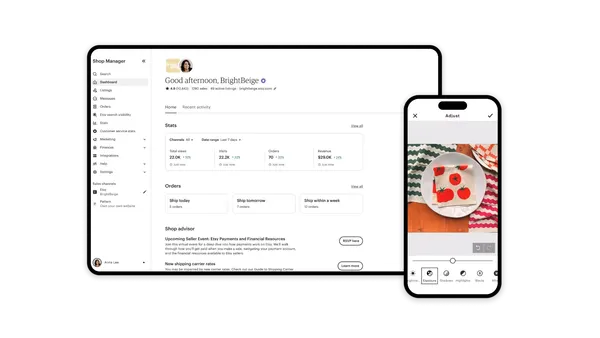Retail operations are complex and can include everything from pricing strategies to inventory management to providing an omnichannel customer experience. Not surprisingly, most retailers end up with a convoluted tech stack to address each operational step. However, this approach has led to a decidedly unjoyful IT management experience — and often, an unjoyful customer experience as well.
For instance, at Blue Mountain Resort, one of Canada’s largest resorts, a complex retail tech stack comprising 26 systems negatively affected the experience for both employees and customers. Having so many systems — one for catering, one for rentals, one for sales, one for retail, etc. — caused data integrity issues, downtime, and slow staff training. It also made simple tasks such as buying a ski lift pass or snowboarding lessons time-consuming for the customer and costly for the company.
Voici La Mode (Voici) — a holding company that operates ten stores and two distribution centers across Cyprus — experienced similar frustrations and discord with its tech stack. Comprising a variety of separate software applications provided by local vendors, Voici’s tech stack included an MS-DOS-based program for the POS, a stand-alone application for accounting, Excel spreadsheets for purchasing and replenishment tracking, and paper-based databases for many of the warehouse operations.
The disparate, outdated system created a number of issues. A lack of integration between applications and the need to manually perform tasks led to mistakes and incorrect data. Operational processes were slow and time-consuming. And, because of siloed data in multiple systems, the company had limited visibility over its operations.
A Unified Experience is a Joyful Experience
Taking a cue from Marie Kondo, retailers such as Voici La Mode and Blue Mountain have decided it’s time to declutter. They ditched their overly complex, multisolution technology stacks in favor of a single, unified commerce platform. For both companies, the transition made operations easier to manage and provided a better experience for the customer.
“A unified commerce solution consists in a single platform that can support e-commerce, mobile, ordering, inventory, CRM, loyalty, POS and more,” said Jason Patrick, vice president Americas at LS Retail. “In the past, you’d have to look at your e-commerce system, your CRM system, and your inventory system separately, and then tie that data back together. With unified commerce, you get a single source of truth for your whole enterprise.”
For Blue Mountain Resort, a unified commerce platform meant vastly enhancing operational efficiencies and profitability. And it has delivered a better customer experience because staff is more effective and quick when attending to customer needs.
The experience has been similar for Voici La Mode. “Our people work faster, our business processes run smoothly, our customers are happy,” said George Kyprianou, the owner of Voici La Mode.
A unified platform can also significantly decrease the IT burden of integrating and updating multiple software systems. Patrick, from LS Retail, points to a pretty common scenario in which retailers may have more than 20 systems, hundreds of stores, and an IT manager overseeing each system.
“The challenge,” Patrick said, “is that when one system pushes a software upgrade, it has to be coordinated with all those other systems, and it can still break because of all the customizations.”
Having a disjointed IT system can even hinder growth, as was the case for Cross Jeans, a denim and casualwear brand. Because the multiple systems Cross Jeans used to manage their B2B and B2C sales had problems communicating with one another, the company faced multiple challenges. Their data was often inconsistent, they couldn’t keep up with changing consumer expectations, and they couldn’t offer customers a loyalty program or the various types of discounts and gift cards that would help the company grow loyalty and revenue.
When Cross Jeans replaced its stack with a unified commerce platform, these issues disappeared. The company could finally monitor processes across all sales channels — websites and physical stores. With the ability to analyze data relative to inventory, customers, vendors, special orders and loyalty programs, Cross Jeans finally had a single source of consistent, up-to-date data. The brand used the information to implement loyalty programs, discounts, and promotions that led to business growth.
“In the past, each department used their own Excel spreadsheets. … There was no common database storing all essential data concerning delivery dates, prices, and special offers,” said Przemyslaw Madejski, chief operating officer at Cross Jeans. “The new unified platform has streamlined communication among employees and given everyone across the chain instant access to all the information they need on business processes.”
When Less Is More
As these retailers have discovered, having multiple systems to manage the business is not only less joyful, but it can also be less profitable. A unified commerce platform eliminates time-consuming, resource-intensive processes that slow down every aspect of operations — from managing inventory to completing a customer transaction at the point of sale — and makes it easier to manage your retail operations.
Marie Kondo notes that the “space in which we live should be for the person we are becoming now, not for the person we were in the past.” Make sure that the tech stack you build today supports not just the retailer you are, but also the one you want to become.










